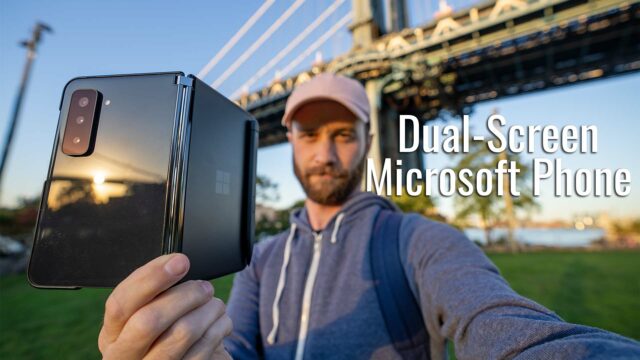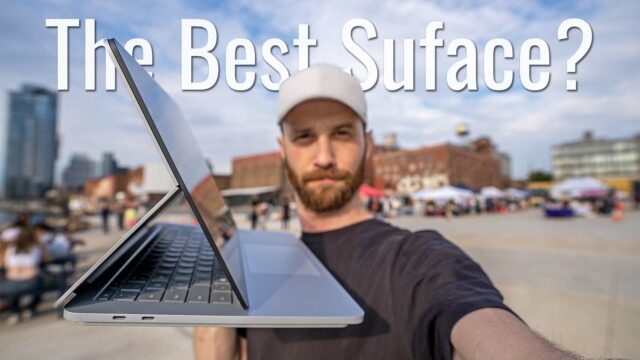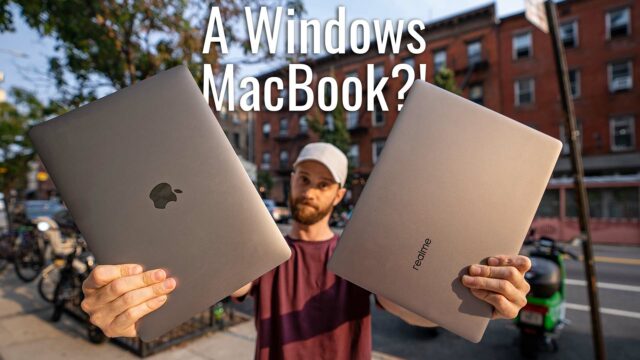What You Need to Know About Windows 10S (& Why It’s a Good Idea for Microsoft)
Alongside the beautiful new Surface Laptop from yesterday, Microsoft also unveiled a new version of Windows that it will initially run called Windows 10 S (S for Student? S for Streamlined? No idea.).
At first glance, this new Windows version seems like a new version of the much hated Windows RT from not too long ago, but it’s at least not that bad. Here’s a quick rundown of how Windows 10 S compares to Windows.
It Can’t Run Apps That Aren’t in the Microsoft App Store
So this is the thing that everyone is upset about hearing: you can’t use apps (are all programs apps now?) that are not available in the Microsoft App Store. This sounds very familiar to Windows RT which couldn’t run any “real” apps, just 32-bit ARM-specific apps. Issue was, no one ended up making them for RT and so RT ultimately had such a limited library of programs that anyone using it didn’t have access to all the apps they are used to using.
Windows 10 S differs in two ways:
- The apps don’t need to be built for a specific architecture, they only need to be submitted to the app store and vetted. The idea being that this will help curb malware/viruses, optimize performance, etc. And it’s definitely easier for developers than porting their apps for RT.
- You can upgrade to Windows Pro for $50 at any time. This will then remove that limit and you’ll be able to download and use apps from anywhere like normal.
You’re Stuck with Microsoft Edge & Bing
If Google ends up putting Chrome in the Microsoft App Store, you’ll be able to use it, but it can’t be your default browser. That option is reserved for Microsoft’s own Edge browser (in much the same way as Chrome is the only browser on Chromebooks). There is no way to change this at the moment.
In addition to that, Bing is the default search and cannot be changed, as well.
Better Battery Life
The simple fact that you can’t use anything but Microsoft Edge for a default browser, and that all the apps are vetted will mean better performance, but also better battery life since they are all optimized with the OS (and won’t be approved if running in the background unnecessarily).
Think it’s safe to say Microsoft’s touted 14.5 hour battery life for the Surface Laptop is partially because of all of this and now I’m wondering how much it changes if I can use whatever programs I want…
Why I Believe Microsoft Made Windows 10 S
Windows has an inherent challenge for Microsoft. As the most popular desktop operating system for a very long time (even if it’s been in decline for a long time), there are a lot of people using programs built for it and companies who create programs for it. To the point where corporate users won’t upgrade their versions of Windows from severely outdated versions to avoid losing the programs they are used to using–go to any corporate establishment in the finance sector, for example, and it’s not uncommon to see Windows XP on some computers. XP. As in almost two decades old, XP.
The issue with this is that Microsoft needs to update Windows. Make it more modular, optimize it, bring it into a newer age of OSes, create standards for programs running on it that otherwise have free-reign on the OS registry, etc. and that would require a pretty extensive overhaul that would alienate a lot of companies and need them to also completely start over.
So how do you do this without literally starting from scratch and losing all of your users? I think Windows 10 S is an interesting approach.
The concept of forcing users to use apps directly from the App Store would allow Microsoft a level of control over apps that they desperately need. When all of the apps are using Microsoft’s Universal Windows Platform it ties into the OS in a manageable way that can allow Microsoft to make changes to the OS that won’t affect the apps. It allows Microsoft to also regulate piracy, generate revenue from app sales in the store (where it would take a percentage like most App Stores), and reign in all the rampant programs that are Windows biggest draw and biggest issue. Also, when Windows makes that “mobile device” they’ve been talking about recently, these apps will be able to run on there as well.
Personally, I think Windows 10 S is a great idea for Microsoft in an effort to move the OS forward, but there is a lot of contingencies. Users need to get Windows 10 S, developers need to see enough adoption to want to submit apps for it (and users might not adopt it without seeing their favorite apps in there first so that’s a conundrum), and the $50 out to get back to Pro is a great insurance for users who want to jump ship, but if too many people opt for it Windows 10 S won’t have enough users, etc. etc. etc.
Only thing for sure, is it’ll be interesting to see how Windows 10 S is received. I, for one, use a lot of apps that are definitely not in the store, but am sort of rooting Windows 10 S simply for the greater good for the OS.
What do you guys think? Love to hear from you in the comments below or reach out to me on social. Thanks for reading!












Why are they calling it Windows 10 S? It’s Windows 10 R.T. They probably just don’t want to lose business, so they named it S instead of R.T., as everyone hated R.T..They’re gonna hate S, too and hate the fact that the Surface laptop cost’s $49.99 more to be get Pro, so you can run the desktop software & games we all want and use daily. The $999.99-$2000.00+ price is too steep, too. Microsoft will probably use those same prices for the Surface Phone when they release it, too.